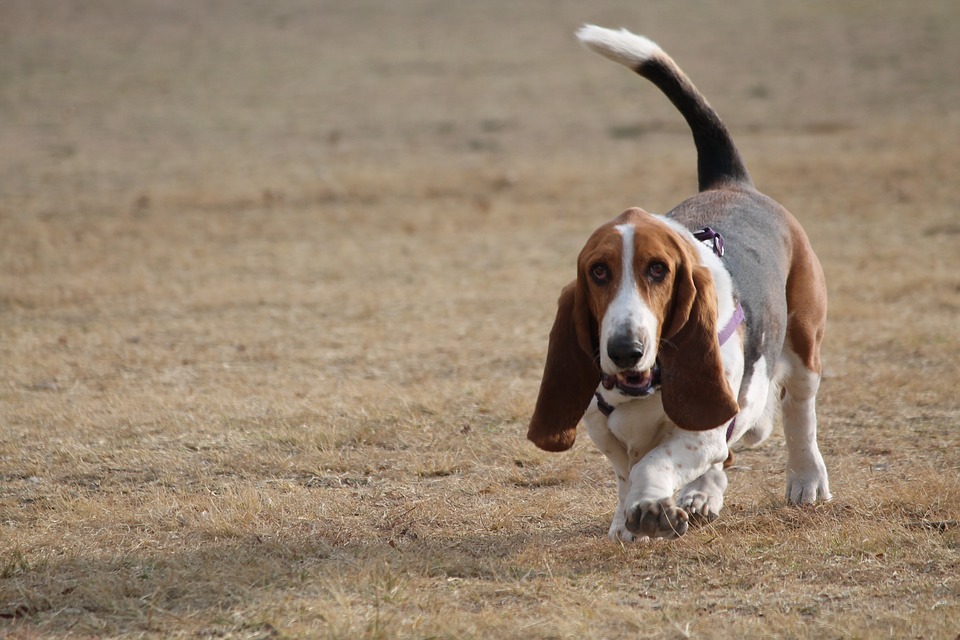The Basset dog breed was initially bred to help humans hunt small creatures such as rabbits. Today, it is still used for this purpose but in only some parts of the country. When a Basset hound is not looking for trails of a bunny, this dog breed has a laid-back attitude, which makes it a perfect family friend, and it loves to be around with kids, too. Basset hounds are built for more endurance rather than speed, and they like to move in a deliberate but effortless manner. This breed also has an uncanny scenting ability. In this article, we are going to get to know more about the Basset hound, its history, characteristics, and how to care for them.
Origin of the Basset Hound
According to experts, Basset hounds descended from the St. Hubert Hound, which happens to be the ancestor of the Bloodhounds that we know today. Basset hounds came about when a mutation in the St. Hubert strain created a dwarfed or short-legged hound. These dwarf hounds were kept because humans were so curious about the hem, and they were later bred on purpose because they turned out to have a unique ability when it comes to tracking and hunting rabbits and hare. Since then, Basset hounds because popular even with the French aristocracy. However, after the French revolution, this dog breed became hunting dogs of commoners who needed a dog that they can follow on foot because they do not have access to horses.
During the 19th century, Basset hounds were brought to Britain when Lord Galaway decided to import a pair of this breed, which later produced a litter of five puppies. However, he did not show them so much. That is why they remain relatively unknown in Britain.
But, in 1874, a man named Sir Everett Millais decided to import a Basset hound name Model from France, and he endorsed the breed in England. He also started a breeding program in his own kennel until his own efforts began gaining publicity for the Basset hounds, which is why he was called the “Father” of this breed in England.
Experts believed that the Basset hound was first introduced in America during colonial times. However, the Basset hound did not come into its own in the United States until during the 20th century. The American Kennel Club began registering Basset hounds as “Bouncers” in 1885. However, it was in 1916 when they formally recognized them and registered them under the name Basset hound.
Characteristics of Basset Hounds
Height: 15 inches
Weight: 40-65 pounds
Life Expectancy: 12-13 years
Hypoallergenic: No
Basset hounds can grow up to 14 inches tall at the shoulder, and they can weigh from 50 to 65 pounds. They are big dogs that have short legs which makes them hard to lift when they become an adult. That is why you should remember that fact before you consider getting yourself a Basset hound for a pet.
Basset hounds are mild-mannered dog breeds, and they can be too laid-back to even be sharp-tempered. That is why they get along quickly with kids and other animals, too. Basset hounds are calm dogs when they are indoors, but they are alert enough so you can also make them a watchdog. Just like any other dog hound breeds, Basset hounds can be a little bit stubborn when it comes to training them. However, they like to receive positive feedback as well as food rewards. Keep in mind that Basset hounds are pack dogs, which is why they can be sad if they are left alone all day. Just like any other dogs, this breed needs early socialization training. Which is why you should expose them to different sights, people, experiences, and sounds while they are still young. Socialization training can help your Basset hounds grow up to be a well-rounded dog.
Taking Care of Basset Hounds
Just like we said, Basset hounds are calm dogs, which is why they make an excellent pet even if you’re living in a small house or an apartment. We suggest that you keep them indoors with you because they are not suited to living outdoors in extreme cold or heat. Because they have a laid-back attitude, Basset hounds are pretty much inactive when they are indoors. But when you take them outside, they will happily lie in the sun or enjoy a long and meandering walk with you along with a little bit of sniffing time on the side. Keep in mind that you should not let your Basset hound become a couch potato because they are prone to obesity, and too much weight is bad for their joints.
When Basset hounds are outdoors, make sure that they are on a leash or a fenced yard because they tend to wander off whenever they spot an invigorating scent. Keep in mind that you might need to help your Basset hounds when it comes to getting in and out of the car because they are not very good jumpers. Also, do not encourage them to jumping on and off furniture and going up and down the stairs because it can put extra stress on their legs and backs.
When you are training your Basset hound, remember to have consistency and kindness. Always use positive reinforcements as well as food rewards to keep them interested in your lessons. If you treat a Basset hound harshly, they will become more stubborn and lazy to do any task.

